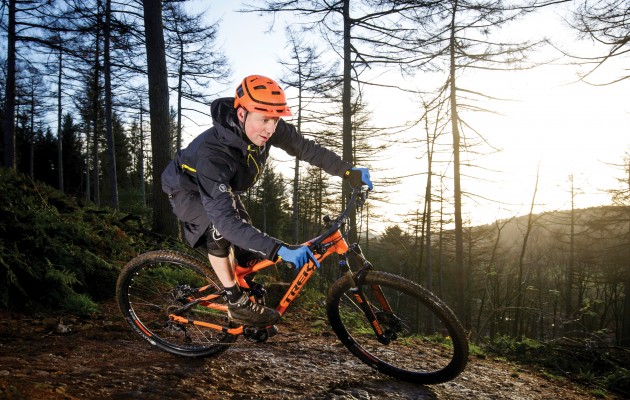More than a feeling
Ever experienced that ride-wrecking sensation of numb hands and massive loss of strength?
A fun-killer that ruins the best descents, arm pump is something most of us have suffered at some point, but what exactly is it and how can we stop it? Cycling physio Dr Graham Theobald from thebodyrehab.co.uk explains…
What is it?
Arm pump is principally caused by muscle fatigue resulting from the continual application of isometric force (tensing) through the bars and brake levers. These forces are mostly contained within the muscle; force accrues rather than being distributed through joint movement.
There has been minimal research into arm pump, though one of note (Burr et al, 2012) looked at, among other physiological demands, isometric grip strength during downhill riding.
As outlined above, this occurs when a rider pulls hard on the brake lever with no change in muscle length or joint angle. This imposes large amounts of stress and strain on the muscles, and has also been found to significantly elevate heart rate.
Effects?
The study found a significant decrease in grip strength mid- and post-run over a relatively short downhill course. New technology means we now have access to force-testers built into handlebar grips and also wireless electromyography to measure muscle activity.

Because of the dynamic position of downhill riding, riders are exposed to sustained isometric forces across the entire body. This is most pronounced at the arms and wrists, owing to the combined effect of holding on to the bars (sometimes excessively tightly) while also grabbing a handful of brake to slow the bike down into tight corners or before large drops. This leads to a reduction in blood flow and oxygen to the arm muscles, causing ischemic pain.
What can we do about it?
Adjustments on the bike can help prevent arm pump: bar position, fork sag and stem length, for example. This is specific to each individual, so experiment with set-up while repeating specific downhill sections.
In terms of conditioning the body, it’s worth doing some isometric strength work by means of grip exercises, wrist flexibility and hand strength using a Powerball or similar product. The most relevant upper body strength exercises are holding press-ups, pull-ups, and gym ball work.
Additionally, keeping hydrated is important to allow muscles to work effectively. Stay flexible in the affected muscles by stretching. Warming up fully is important, and it may also help to adapt your riding style to put more weight on your feet and less on your hands, while also keeping braking to a minimum. Finally, try to relax and stay loose.

Is it serious?
Arm pump can be the precursor to more serious problems. Left unchecked, it may lead to the clinical condition, chronic exertional compartment syndrome. As with most force-associated problems, much can be done to prevent it happening, through a variety of specific strength training exercises, stretching and effective bike set-up. In extreme cases, surgery can provide a solution.




